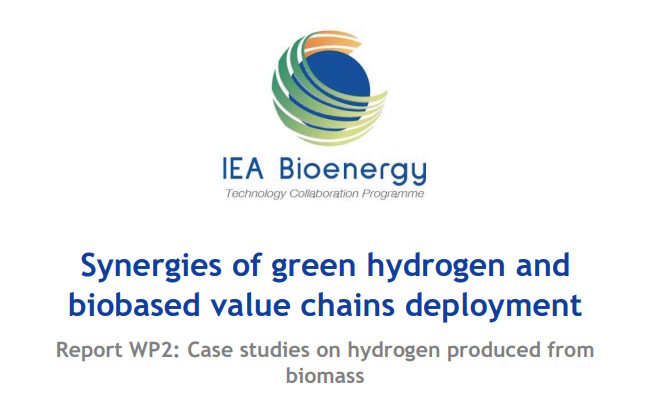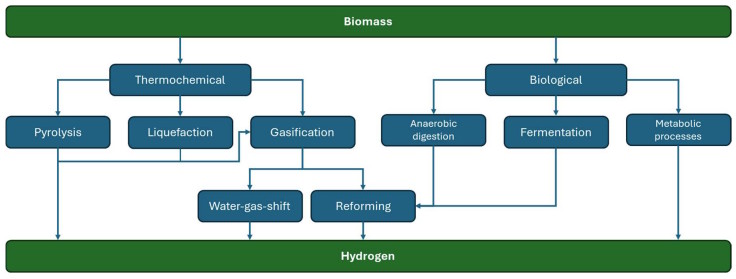Case studies on hydrogen produced from biomass

The new report “Synergies of green hydrogen and biobased value chains deployment. Report WP2: Case studies on hydrogen produced from biomass” was released by the Inter-Task Project Synergies of Green Hydrogen and Biobased Value Chains.
The report explores technology options for producing biomass-based hydrogen (biohydrogen) and their respective technology readiness levels.
✅ Regulatory context
- It is important to underline that biohydrogen does not qualify as renewable hydrogen or renewable fuel of non-biological origin (RFNBO) under the Renewable Energy Directive (RED III), since biomass is explicitly excluded from the definition of RFNBO.
- RED III: ‘renewable fuels of non-biological origin’ means liquid and gaseous fuels the energy content of which is derived from renewable sources other than biomass;
- Nevertheless, the report provides valuable insights into how different biomass conversion technologies could contribute to hydrogen and commodity production.

Figure: Main conversion processes to produce hydrogen from biomass sources (based on Buffi et.al 2022)
Source: Report “Synergies of green hydrogen and biobased value chains deployment”
☑️ Key findings of the report
- Biohydrogen can be produced through several conversion routes, using a wide range of biogenic feedstocks.
- Feedstock options vary from low-grade materials (wastewater, forestry and agricultural residues) to higher quality feedstocks (bioethanol, biomethane).
- Many production concepts deliver additional co-products, such as biochar, biocarbon, or biomethane, and in some cases CO₂ streams that could enable negative emissions.
- Case studies provide detailed assessments of technology readiness, economic fundamentals, climate impacts, and their potential role in the energy system.
✅ Status of development
- All production concepts examined remain at the development stage (TRL 4–7) and none has yet reached full commercialization.
- The report highlights both the opportunities and the barriers for scaling these technologies.
☑️ Takeaway
- While biohydrogen will not play a role in fulfilling RED III targets for RFNBO, it may provide complementary pathways for decarbonisation and resource efficiency, particularly if integrated into biobased value chains with multiple outputs.
➡️ Source: Report “Synergies of green hydrogen and biobased value chains deployment”
